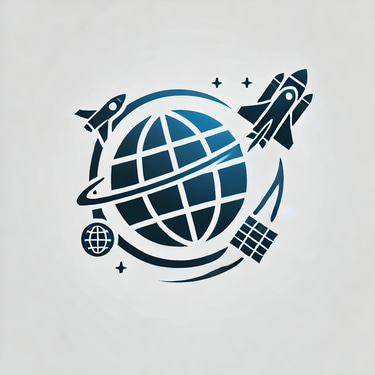NASA's Artemis Program Explained
NASA’s Artemis program is launching a new era of human space exploration, aiming to return astronauts to the Moon and prepare for future missions to Mars. This article breaks down the Artemis missions, technologies like the SLS and Orion, and how NASA plans to build a sustainable lunar presence. It’s a fast, clear look at everything you need to know—straight from World of Aerospace.
SPACE EXPLORATION & PLANETARY SCIENCE
Vince Sanouvong
2/10/20252 min read
Watch video here:

It’s been over 50 years since the last human walked on the Moon, but that’s about to change. NASA’s Artemis program is launching a new era of lunar exploration—one that goes far beyond flags and footprints. With Artemis, we’re not just going back to the Moon—we’re building the infrastructure for humanity’s future in deep space.
Why Is NASA Returning to the Moon?
Named after Apollo’s twin sister in Greek mythology, the Artemis program has three main goals:
Land the first woman and the first person of color on the Moon
Establish a sustainable lunar presence
Prepare for human missions to Mars
Unlike the Apollo era, Artemis is built on international collaboration, commercial innovation, and long-term sustainability. The Moon will serve as a proving ground for new technologies, deep space logistics, and mission architectures that will one day support astronauts on the Martian surface.
The Artemis Mission Timeline
Here’s a breakdown of the major Artemis missions:
Artemis I (2022): An uncrewed test flight that sent the Orion spacecraft around the Moon and back using NASA’s Space Launch System (SLS). It proved critical systems and heat shield performance.
Artemis II (2025): The first crewed mission of Artemis. Four astronauts will fly around the Moon in Orion but will not land. It’s a full-dress rehearsal for deep space human travel.
Artemis III (2026 or later): The big one. This mission will land astronauts near the Moon’s south pole using SpaceX’s Starship Human Landing System (HLS). It will be the first human landing on the Moon since 1972.
Artemis IV and V: These missions will help build the Lunar Gateway, a small space station orbiting the Moon. It will support science, docking, and eventually refueling operations for longer missions.
Key Technologies Powering Artemis
Artemis is possible because of new technologies and commercial partnerships:
SLS (Space Launch System): NASA’s super-heavy lift rocket designed to send humans into deep space.
Orion Spacecraft: A deep-space capsule for crew transport, built in collaboration with the European Space Agency.
Starship HLS: A modified SpaceX Starship that will ferry astronauts from lunar orbit to the surface and back.
Gateway: A modular space station in lunar orbit that supports crewed missions and long-term research.
These technologies aren’t just about the Moon—they’re stepping stones toward Mars.
What Comes After the Moon?
NASA isn’t stopping at lunar landings. Artemis is paving the way for:
A permanent Artemis Base Camp on the lunar surface
In-situ resource utilization (ISRU), such as mining water ice for drinking water and fuel
In-space refueling and testing next-gen propulsion systems like Solar Electric Propulsion (SEP)
Human Mars missions in the 2030s
Everything we learn on the Moon—habitats, rovers, radiation protection, autonomous systems—will help astronauts survive and thrive on Mars.
A Global Effort
Artemis is a global program. Over 30 countries have signed the Artemis Accords, agreeing to peaceful, transparent exploration of the Moon and beyond. Key partners include:
ESA (Europe): Providing Orion’s service module and Gateway modules
JAXA (Japan): Developing life support and Gateway contributions
CSA (Canada): Providing the next-gen robotic arm, Canadarm3
NASA is also working with private companies like SpaceX, Blue Origin, and Lockheed Martin to reduce costs and accelerate innovation.
Why It Matters
Artemis marks the beginning of a new era. For the first time, we’re seeing a serious effort to sustain human life beyond Earth. It’s not just about exploration—it’s about building an interplanetary future.
Whether you dream of becoming an astronaut, aerospace engineer, or planetary scientist, Artemis shows us what’s possible when humanity works together to push the boundaries of exploration.
